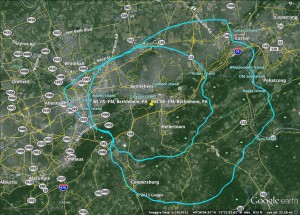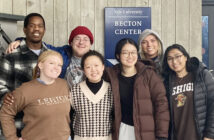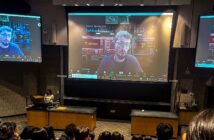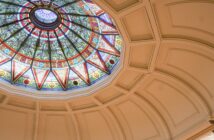
A map of WLVR’s expanded coverage. The stations coverage has expanded farther north, south and east, from 33 watts to 240 watts which will allow the station to reach more listeners in the Lehigh Valley. (Courtesy of A.J. Fritzinger)
WLVR’s coverage has expanded to reach 750,000 potential listeners. The stations coverage has expanded farther north, south and east, from 33 watts to 240 watts which will allow the station to reach more listeners in the Lehigh Valley.
WLVR was founded in 1946 by The Brown and White as a freeform college radio station. Seventy years later, it is considered one of the best radio stations in the Lehigh Valley, having won awards such as the Lehigh Valley Music Award for best College/Community Radio Station several times.
With no specific target demographic, WLVR attracts listeners of all different backgrounds with interests ranging from metal and hard rock to indie and EDM. Now, WLVR has expanded its coverage farther north, south and east, from 33 watts to 240 watts, and its audience has grown from 250,000 potential listeners to about 750,000 potential listeners.
After an eight-year expansion process, the antenna, located on a 20-foot tower on Iaccoca, was officially completed and installed in July 2015. The license that granted the station the ability to expand went into effect on Dec. 25, 2015. On Jan. 9, WLVR flipped the switch and started broadcasting to a wider audience.
“We’re not just this little radio station that broadcasts to the college campus,” A.J. Fritzinger, WLVR’s station manager, said. “It’s a terrestrial radio station that is in the No. 70 market, putting us in the top third of the tiers of radio markets in the country.”
For many years, WLVR was located in the basement of the University Center. According to Fritzinger, who has been part of the WLVR family since 1996, mailboxes surrounded the headquarters, causing heavy foot traffic in that area. Students retreiving mail would see the fluorescent “on air” sign above the station’s headquarters and then realize that Lehigh had a radio station.
In 2010, the station was relocated to Grace Hall in the Caruso Complex. Album covers line the walls of WLVR’s headquarters and music is always blasting from the broadcast studio.
With WLVR’s geographical expansion came an internal expansion as well. All new equipment was installed in the broadcast studio, adding to the clarity and legitimacy of this student-run station.
“Everybody’s shows have gotten more professional,” Arthur Hedderly-Smith, ’17, the station’s general manager, said.
With the expansion, participation levels for the club have risen. According to tech director Dwight Kessler, ’17, almost every slot time is filled, meaning that there are back-to-back on-air shows.
Kessler said it’s exciting to have such a packed schedule. This gives people who have niche music tastes a space to share their interests.
“During high school, I listened to stuff no one else listened to,” Kessler said. “But when you get an artist out there, it’s probably the best feeling that you can get.”
WLVR is not done making changes and expanding its reach.
“The next step in our growth is to get FM translators, which will allow us to reach areas that our antenna pattern does not cover,” Fritzinger said.





Comment policy
Comments posted to The Brown and White website are reviewed by a moderator before being approved. Incendiary speech or harassing language, including comments targeted at individuals, may be deemed unacceptable and not published. Spam and other soliciting will also be declined.
The Brown and White also reserves the right to not publish entirely anonymous comments.
2 Comments
I was on the WLRN/WLVR staff in 1968 -1970 as an engineer, newscaster, and sports reporter
While the studios where in the east end basement of Packer Hall as part of the Journalism dept, the call letters originally were WLRN (Lehigh Radio Network). It broadcast top 40 music in a Drake format on AM carrier current of 640 kHz. WLVR was added at about that time as a second service and broadcast progressive rock on AM carrier current of 690 kHz.
Only later did it all consolidate to be one station doing progressive rock when the FM license was received.
Glad ‘LVR is still going strong. I was Chief Engineer back around the 1991-1993 time frame and worked with Marc Gabriel on the business side and George Webb on the technical side to get the wheels in motion towards moving the transmitter to the Mountaintop campus from the University Center. Tunnels? What tunnels?